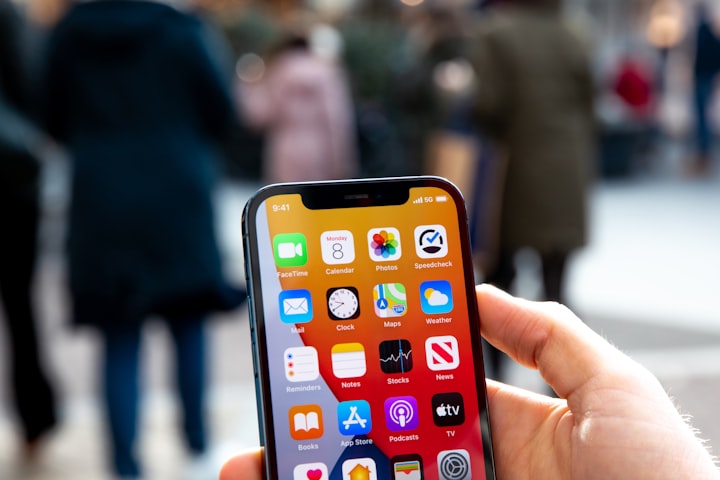What is 6g technology and how it work in 2023
What is 6g technology

The internet:
The internet is a massive network of computers, servers, routers, and other devices that are connected to each other across the world. It's like a global communication system that allows people to share information and resources, access online services, and connect with others no matter where they are in the world.
It has become an essential part of modern life, used by businesses, governments, and individuals alike to connect and collaborate on a global scale. Unlike traditional communication systems, the internet doesn't have a central authority controlling it. Instead, it's maintained by a community of people and organizations who work together to ensure its reliability, security, and accessibility.
Diffrent between 2g and 3g and 4g
2G, 3G, and 4G are different generations of mobile network technology, each offering different levels of speed, reliability, and functionality.
2G, or second-generation, was the first digital mobile network technology introduced in the 1990s. It was designed primarily for voice calls and text messaging and offered data transfer speeds of up to 64 kbps (kilobits per second).
3G, or third-generation, was introduced in the early 2000s and was designed to support higher data transfer rates, allowing for faster internet browsing, video calling, and multimedia messaging. It offered data transfer speeds of up to 2 Mbps (megabits per second).

4G, or fourth-generation, was introduced in the late 2000s and provided significant improvements over 3G, including faster data transfer rates, lower latency, and better reliability. It allowed for high-definition video streaming, online gaming, and advanced mobile applications. 4G offered data transfer speeds of up to 100 Mbps (megabits per second) or even up to 1 Gbps (gigabit per second) in some cases.
In summary, 2G was primarily designed for voice calls and text messaging, while 3G introduced higher data transfer rates for internet browsing and multimedia messaging. 4G offered significant improvements over 3G, including faster data transfer rates and better reliability, enabling advanced mobile applications and services.
Interent future:
The future of the internet looks bright and promising, with many potential developments in store. As more devices become connected to the internet, we can expect to see increased integration of technology into our daily lives. For instance, smart devices like home appliances and wearables will communicate with each other to provide personalized and efficient experiences.
In addition, there will be significant improvements in internet speed and efficiency as technology infrastructure continues to develop. This will allow for even more advanced applications and services that can enhance our lives.
There will also be a greater emphasis on improving privacy and security measures for internet users due to the rise of cyber threats and data breaches. We can expect to see the development of better encryption techniques, stronger authentication methods, and more regulation of data handling practices.
Moreover, artificial intelligence will be integrated into the internet to provide personalized and efficient experiences for users. This will include the development of intelligent assistants, chatbots, and recommendation systems that learn and adapt to user preferences over time.

Finally, the Internet of Things
(IoT) will continue to expand, leading to greater efficiency and automation in various industries. As more devices and systems become interconnected, we can expect to see even more exciting developments in the future.
5G and 6G technology offer significant improvements over previous generations of mobile network technology.
They provide faster download and upload speeds, lower latency, increased capacity, and improved reliability. With more devices becoming connected to the internet, 5G and 6G technology can support more simultaneous connections, improving network efficiency and reliability.
Additionally, 5G can enable the development of smart cities and autonomous vehicles, while 6G could enable even more advanced applications such as remote surgery and holographic communications.
Why pople ned 5g and 6g ?
Overall, the benefits of 5G and 6G technology are numerous, and they are necessary to keep up with the increasing demand for faster, more reliable, and efficient connectivity. They offer improved user experiences for real-time applications such as gaming and video conferencing, and enable the development of new applications and services that can greatly enhance our daily lives.
In summary, people need 5G and 6G technology because they offer faster speeds, lower latency, increased capacity, improved reliability, and enable new applications and services that can greatly enhance our daily lives.
Conclusion:
The future of the internet looks promising with the development of 5G and 6G technology. These new technologies offer faster speeds, lower latency, increased capacity, improved reliability, and enable new applications and services that were not possible before.
As more devices become connected to the internet, we can expect to see increased integration of technology into our daily lives.
Moreover, there will be a greater emphasis on improving privacy and security measures for internet users.
The internet of things (IoT) will continue to expand, leading to greater efficiency and automation in various industries. Overall, the benefits of these new technologies are numerous, and they will continue to shape the future of the internet.
About the Creator
Datchana E
I am considered one of the best bloggers in the industry, known for my exceptional writing abilities and ability to captivate my audience. I will post trendigng topics and usefull lifehacks for problem solving titally my blogs for all






Comments
There are no comments for this story
Be the first to respond and start the conversation.